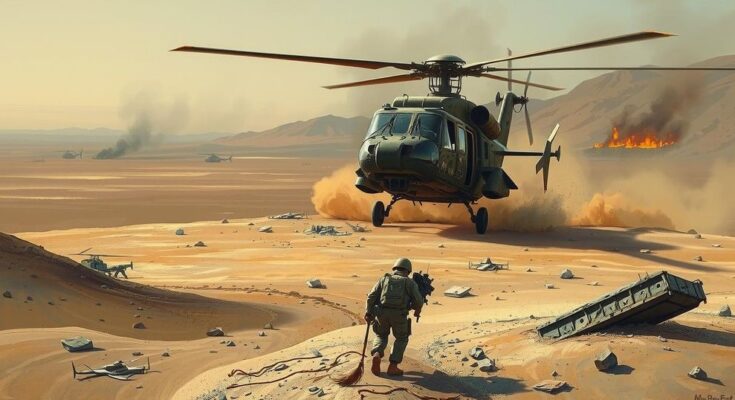A U.N. helicopter was attacked in South Sudan, killing one crew member and injuring two while trying to rescue soldiers. This incident reflects escalating political tensions and fears of a collapsed power-sharing deal, potentially leading to civil war. President Kiir urged calm amidst criticism of the leadership’s role in the crisis.
On Friday, a United Nations helicopter conducting an evacuation mission in South Sudan was attacked by gunmen, resulting in the death of one crew member and injuries to two others. The U.N. reported that the helicopter was attempting to rescue wounded South Sudanese soldiers in Upper Nile State at the time of the incident. The group known as the White Army claimed that the gunfire started when the soldiers were about to board the aircraft.
The attack came amid escalating political tensions within South Sudan, with fears that a critical power-sharing agreement could collapse, potentially igniting a new civil conflict. President Salva Kiir addressed the situation, urging calm and assuring that his government would manage the crisis, stating, “Let no one take law into their hands.”
Critics, however, have pointed fingers at Kiir and his political rivals, asserting that they are responsible for the ongoing unrest. The power-sharing deal between Kiir and Vice President Riek Machar, which ended a devastating civil war in 2018, is now facing serious threats as clashes between their factions occur in Upper Nile State. Reports indicate that 27 soldiers were killed during the helicopter attack, though independent verification of this figure remains unconfirmed.
In summary, the recent attack on a U.N. helicopter in South Sudan underscores the precarious political situation in the nation. With rising tensions and the potential failure of a critical power-sharing agreement, both President Salva Kiir and the political landscape are under scrutiny as the country faces threats of renewed civil conflict. The incident reflects the urgent need for effective governance and conflict resolution in South Sudan.
Original Source: www.nytimes.com




